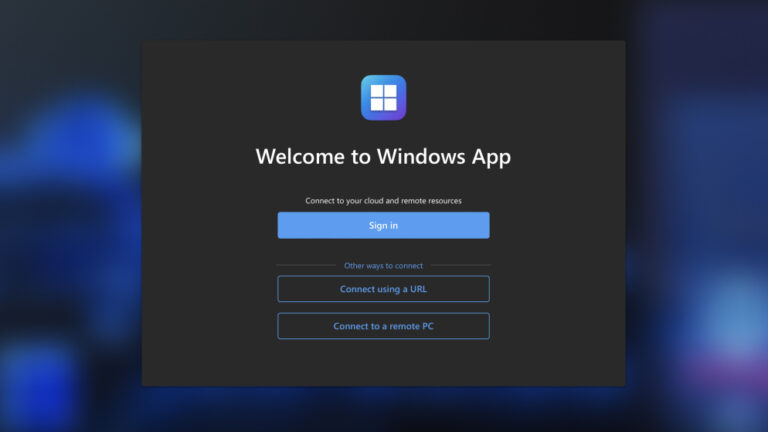Although it is still in beta, this is a simple method of remote PC connections.
The crazy guys at Microsoft have unveiled a new “Windows” app that lets users connect to a Windows PC through remote devices, which includes Macs. You can connect to Windows from a PC via Azure Virtual Desktop, Windows 365, Remote Desktop, or even through an iPhone, iPad, Mac, or a web browser. If you connect from a Windows PC via a web browser, Microsoft claims you do not even need to download any software; it is available as a preview right now, and on Mac, it is available as a beta through TestFlight.
For some reason, the Windows App is not supported on Android devices. It functions as a remote connection hub, displaying all the versions of Windows that you can connect to from the device you are using. It supports web browsers, MacOS, iPad OS, iOS, Windows, and multiple monitors with custom resolutions. You can also access peripherals like printers and webcams. According to Microsoft, the app offers a central home screen that shows all connected devices and makes it easy to switch between accounts.

We tested the app for this article and noticed that it did not recognize our standard Microsoft user name. The Verge claims that because the app is intended for business users, it does not support home users at this time for all of its functionality. Nevertheless, you can still use the app to connect to a remote PC, even on a Mac. After downloading the TestFlight app, all we had to do was install the Windows app, point it to our PC, and log in.
After about five minutes of fiddling about, we were able to see our desktop PC on our Mac (albeit we had to activate Remote Desktop for it to function). We then just needed to plug in the IP address of our PC and log in remotely as admin.
With the company planning to move its operating system to the cloud in future versions, this new app appears to be a sign of things to come for Windows. Should it materialize, you could theoretically be using the same version of Windows on all of your devices and perhaps having to pay a subscription fee each time you add a new device, like a laptop or mobile phone. This could also align with the company’s AI goals, since the majority of AI services are still run in the cloud, and its AI-powered Azure supercomputer is currently ranked #3 in the world according to the most recent TOP500 rankings, making it the only cloud-based system in the top 10.
According to an Intel executive, we will hear more about Windows in the cloud when Windows 12 launches, which could happen in 2024. Given the events of the past year, we know little about Microsoft’s next operating system other than the fact that it will probably focus on artificial intelligence (AI). Intel has been busy marketing “AI PCs,” and we are sure Microsoft will be on board for that as well, given its recent deployment of its Copilot AI assistant to Windows 11 and possibly even Windows 10.

